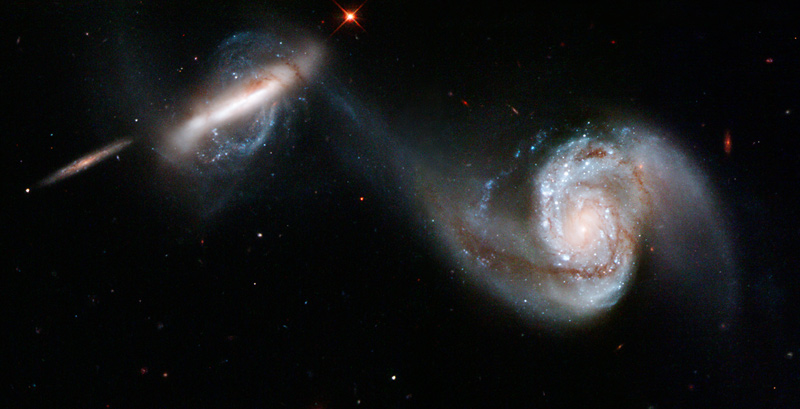SATURN’S RINGS
By Evan FinnesSaturn’s rings were first discovered by Galileo Galilei in 1610, but he was unable to identify them as rings, instead he called then “ears”. In 1655 Christiaan Huygens became the first person to identify Saturn’s “ears” as Rings. Since the discovery of the rings in 1610, there have been many theories which have attempted to describe the formation of the rings.
The most popular theory is that Saturn’s rings are only 100 million years old. These young rings would have formed by a commit that was ripped apart by Saturn’s tidal forces, or by a moon which was destroyed by a large asteroid impact. The strong evidence for this theory is that the rings are much too bright to be very old, because as time passes the rings should accumulate dust which would slowly darken the rings.
Recent simulations, based on data gathered by the Cassini mission, show that the rings might be much larger and much older than previously thought, perhaps as old as four billion years. These simulations show that the particles in the rings form clumps and are not evenly distributed particles. This could mean that there is an ongoing warfare between formation and destruction within the rings. The particles slowly clump together and a blasted apart by micro-meteors. The researchers believe that the reason for the relative brightness of the rings could be that the dust is incorporated into the centers of the clumps after reformation.
The rings consist of eleven major sub-rings. For the most part the rings have been given lettered names in the order of their discovery. The D ring is the closest to Saturn and is very faint. Voyager 1 discovered that the D ring consists of three ringlets: D73, D72, and D68. Recently Cassini has discovered that D73 has moved 200 km towards Saturn since its discovery. The C ring is about 5 meters thick and it has a mass of about 1.1×1018 kg. If viewed from above or below the ring appears transparent because 5 to 12 percent of the light perpendicular to the ring is blocked. The B ring is the thickest ring, about 5 to 15 meters. Voyager discovered “spokes” inside the B ring; these spokes were not observed again until Cassini observed them in 2007. These spokes may be seasonal phenomena, as they disappear in midsummer then reappearing around equinox, and disappearing again around midwinter. The A Ring is 10 to 30 meters thick and has a mass of about 6.2 x 1018 kg. In 2006 4 small tiny moons were discovered inside the A ring. There is now estimated to be over 1000 such moonlets inside the A ring. The F was discovered in 1979 by Pioneer 11. The ring is the most active of the rings, and is the very thin outermost ring. The ring is held together by two moons, Prometheus and Pandora. Occasionally during Prometheus’s orbit, it approaches the ring causing kinks and knots. It also steals material from the ring leaving behind a dark channel.
Besides their formation, there is still much to learn about the rings. For instance, what causes the seasonal spokes which occur inside the B ring? Why is some of the material accreted into tiny moonlets, while the rest remains as independent particles or clumps? Why has the ringlet D73 moved in towards Saturn? Whatever the answers may be, anyone who looks at Saturn through a telescope knows one thing for sure–Saturn is one of the most amazing and beautiful objects in our solar system.
